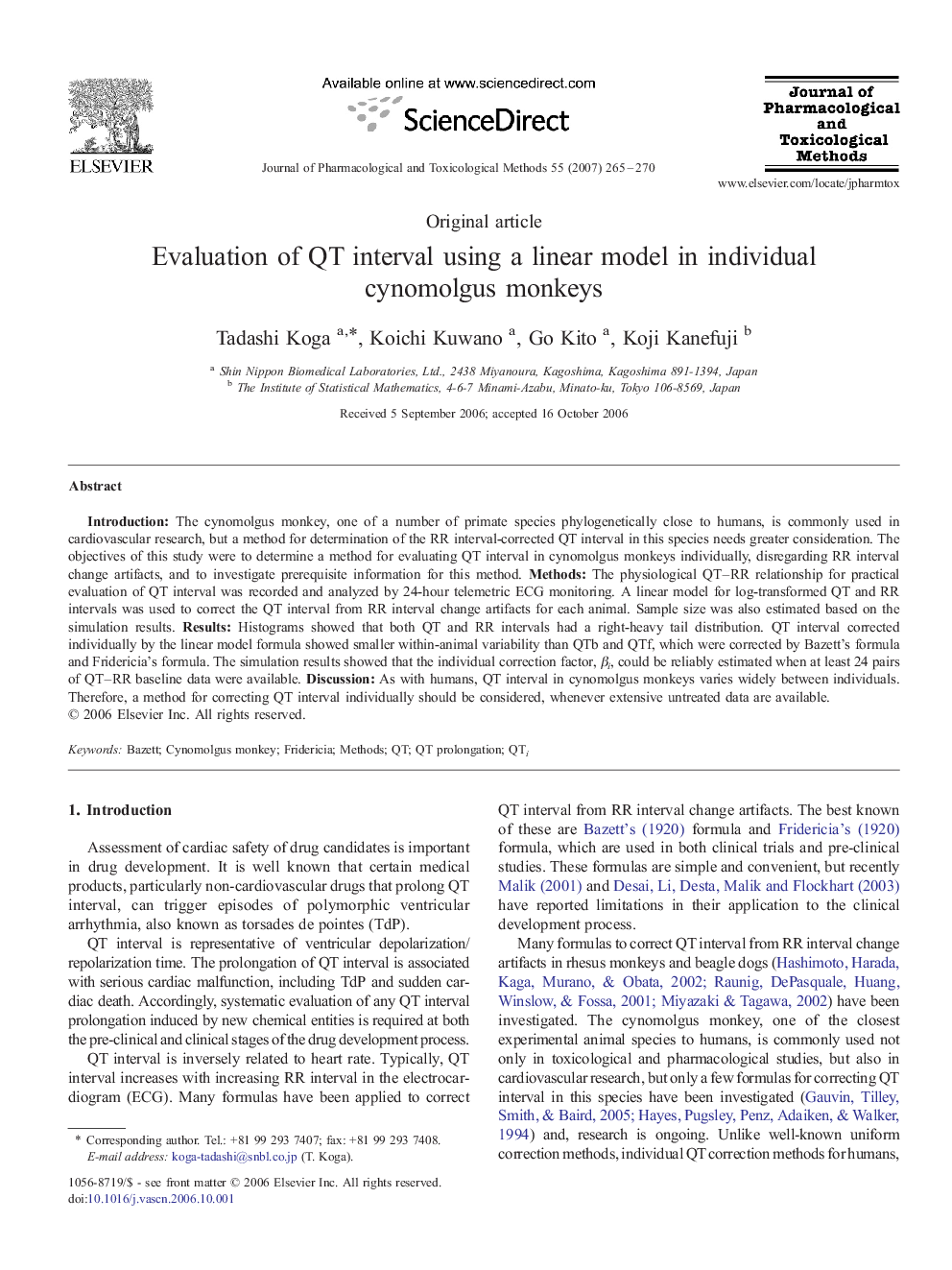| Article ID | Journal | Published Year | Pages | File Type |
|---|---|---|---|---|
| 2550241 | Journal of Pharmacological and Toxicological Methods | 2007 | 6 Pages |
Introduction: The cynomolgus monkey, one of a number of primate species phylogenetically close to humans, is commonly used in cardiovascular research, but a method for determination of the RR interval-corrected QT interval in this species needs greater consideration. The objectives of this study were to determine a method for evaluating QT interval in cynomolgus monkeys individually, disregarding RR interval change artifacts, and to investigate prerequisite information for this method. Methods: The physiological QT–RR relationship for practical evaluation of QT interval was recorded and analyzed by 24-hour telemetric ECG monitoring. A linear model for log-transformed QT and RR intervals was used to correct the QT interval from RR interval change artifacts for each animal. Sample size was also estimated based on the simulation results. Results: Histograms showed that both QT and RR intervals had a right-heavy tail distribution. QT interval corrected individually by the linear model formula showed smaller within-animal variability than QTb and QTf, which were corrected by Bazett's formula and Fridericia's formula. The simulation results showed that the individual correction factor, βi, could be reliably estimated when at least 24 pairs of QT–RR baseline data were available. Discussion: As with humans, QT interval in cynomolgus monkeys varies widely between individuals. Therefore, a method for correcting QT interval individually should be considered, whenever extensive untreated data are available.
